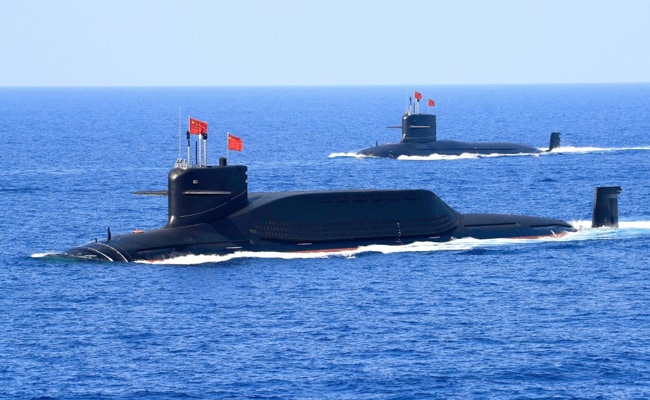Chinese Study Suggests Submarines Could Destroy Starlink Satellites with Laser Weapons
Elon Musk’s Starlink project, aimed at providing internet access to even the most remote corners of the planet through a constellation of satellites, has captured global attention. However, a study conducted by China’s People’s Liberation Army (PLA) has proposed a potential countermeasure that could threaten this ambitious project. The study, reported by the South China Morning Post (SCMP), suggests that PLA submarines equipped with lasers could be capable of destroying these satellites if China’s security is perceived to be at risk.
The research was carried out by scientists at the PLA, specifically led by Wang Dan, a mentor at the Naval Submarine Academy. Published in the Chinese-language journal Command Control & Simulation, the study outlines a detailed plan to deploy laser-equipped submarines in various oceans to neutralize threats posed by military blackmail against China. These submarines would remain submerged, surfacing only to extend an “optoelectronic mast” to fire at the target satellites.
One of the primary motivations behind this approach is the need for discretion and efficiency in anti-satellite operations. Currently, missile launches, often used in such operations, leave conspicuous smoke trails that can easily reveal the launch location. This visibility poses significant risks, as the launch site can be quickly identified and potentially counterattacked. The research team emphasized that “the primary means of anti-satellite operations relies on ground-to-air missiles, but this approach has certain issues, mainly in terms of concealment.”
Starlink’s satellite network, with its numerous, densely packed, and relatively small satellites, presents a formidable challenge to conventional anti-satellite strategies. Even if a substantial number of these satellites were destroyed, the network’s redundancy ensures that replacements could quickly restore functionality. Thus, attacking the network with missiles is seen as highly inefficient. The PLA’s study posits that submarine-based laser weapons could address these challenges more effectively.
The research provides a step-by-step guide to executing such an attack on Starlink-like satellites. Initially, submarines equipped with laser weapons would be deployed to the designated sea area. These submarines would navigate to their target positions based on command instructions and wait for the satellites to enter their attack range. The timing for raising the laser weapon would be determined by pre-acquired satellite overhead schedules. Once the satellite is within range, the laser weapon would be deployed. Due to the limitations of submarine detection equipment, additional forces would be required to guide the submarine in targeting the satellite. After completing the attack, the submarine could either remain submerged for subsequent missions or return to its home port.
This strategic approach is driven by the immense scale and resilience of the Starlink satellite network. As of June 2024, there are 6,219 Starlink satellites in orbit, with 6,146 actively functioning, according to astronomer Jonathan McDowell, who tracks the constellation. The network’s design ensures that it can withstand the loss of several satellites without significant disruption, necessitating a more covert and efficient method of disabling them.
The implications of this study are significant, reflecting the increasing militarization of space and the strategic importance of satellite networks in global communications and defense. As nations continue to develop advanced technologies for both deploying and potentially disabling satellite systems, the dynamics of space security and international relations are poised to become even more complex. The PLA’s research highlights the ongoing efforts by major powers to secure their interests in this critical domain, using innovative and unconventional methods to address emerging threats.

